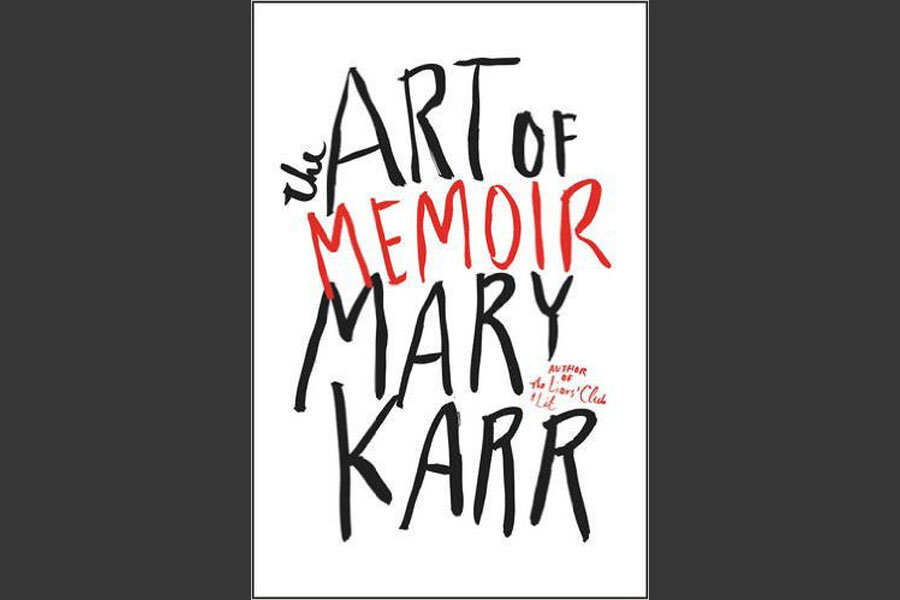'The Art of Memoir' is Mary Karr's attempt to bolster a fallen genre
Loading...
Given the severe mauling the entire genre of memoir-writing has taken in the last decade in the court of public opinion, it's little wonder that bestselling author Mary Karr spends so much time in her new book, The Art of Memoir, talking about honesty and fraud. Karr, who shot to fame with 1995's "The Liars Club," and followed it up with 2000's "Cherry" and 2009's "Lit," has been teaching courses at Syracuse University for 30 years and clearly has aspiring writers of all ages in mind when dispensing advice about the craft. But there's a certain amount of image-rehabilitation that has to happen even before the nuts and bolts can be addressed.
“Truth may have become a foggy, fuzzy nether area,” Karr writes, “But untruth is simple: making up events with the intention to deceive.” She rehearses for her readers some of the highest-profile memoir-frauds of recent years, from James Frey's defiant and widely-publicized debacle with "A Million Little Pieces" to Greg Mortenson's extensively-debunked "Three Cups of Tea" to Binjamin Wilkomirski's fabricated Holocaust survival-story "Fragments," to which Karr originally gave a favorable blurb, before she and the rest of the world learned that Wilkomirski was lying through his teeth.
She assures her readers that this has never been her own problem, since she has “zero talent for making stuff up,” and she sternly warns her students about how that “intention to deceive” business is a fundamental contradiction of the memoirist's art, which is to get at the most personal and even the most painful truths of the past.
It doesn't quite convince, of course, and Karr herself seems a bit worried that it doesn't. She gives her readers the now-standard admonitions about showing-not-telling, and she urges them to embrace the “carnality” of their memories, reveling in their emotions and physical senses. She has some especially interesting things to say about developing a voice, which she likens to “learning how to lodge your own memories inside someone else's head.”
Alongside her discussion of voice she recalls a story about her Syracuse colleague George Saunders: “[Saunders] murdered himself in grad school trying to sound like gritty, working-class minimalist Ray Carver,” she recalls. “Ray was a lumbering, trailer-park aficionado who favored stark realism using the fewest words, so George showed up driving a beater pickup and sporting a cowboy hat.”
But the book can't help circling back to the question of honesty, and the Saunders anecdote helps it get there, because Carver didn't favor stark realism using the fewest words; as is now well known, that persona was almost entirely the creation of Knopf editor Gordon Lish. So did Saunders ever really sport a cowboy hat?
That the question flows inevitably from the wrong-note story seems not to occur to Karr, nor does the fact that “intention to deceive” comes in as many variations as there are people on Earth. Her repetitions throughout "The Art of Memoir" that she's a stickler for truth in autobiography sit alongside her acceptable fudges: compressing timelines? OK. Fabricating dialogue? OK. Inventing narrative-helping events? OK. The list is long enough to make you wonder if “intention to deceive” really means “dumb enough to get caught.”
“If I didn't have to pay out the wazoo to quote from better books than my own,” she tells us at one point, “I'd have way more Nabokov in here.” And underneath the absurdity of the claim (her book contains 17 quotes from Nabokov, so it's unlikely her publisher's wazoo would have noticed a few more) is a hint of faux-humble posturing. Combine it with the tinnily fake modesty of “no one elected me the boss of memoir” and a reader might start to wonder if Karr, the self-described erstwhile “academically uncredentialed former redneck Texan,” really does think this Nabokov fella is a better writer than she is, or if she might instead be indulging in what she refers to throughout "The Art of Memoir" as “horse dookey.”
The picture she clearly wants to paint of herself – a rootin'-tootin' Texas gal who strides into her Syracuse seminars sporting a 10-gallon hat and a pet rattlesnake named Lyndon – seems very little less artificially constructed than the tough-guy persona of James Frey or, more recently, the crackhead-with-a-soul-of-gold version of himself Bill Clegg has sold in two successful memoirs.
It may be that the memoir's image as a fundamentally corrupted genre can't be rehabilitated at all, and it may be that would-be memoirists, many of whom have led scandalously boring lives, don't especially want to be rehabilitated. The genre is good business, after all, as writers from Rick Bragg to Cheryl Strayed could attest, and if Karr's “intention to deceive” protests are offered with a wink and a nod, maybe her students already know that. In that case, "The Art of Memoir" might just as easily have been titled "How to Join the Liars Club."








